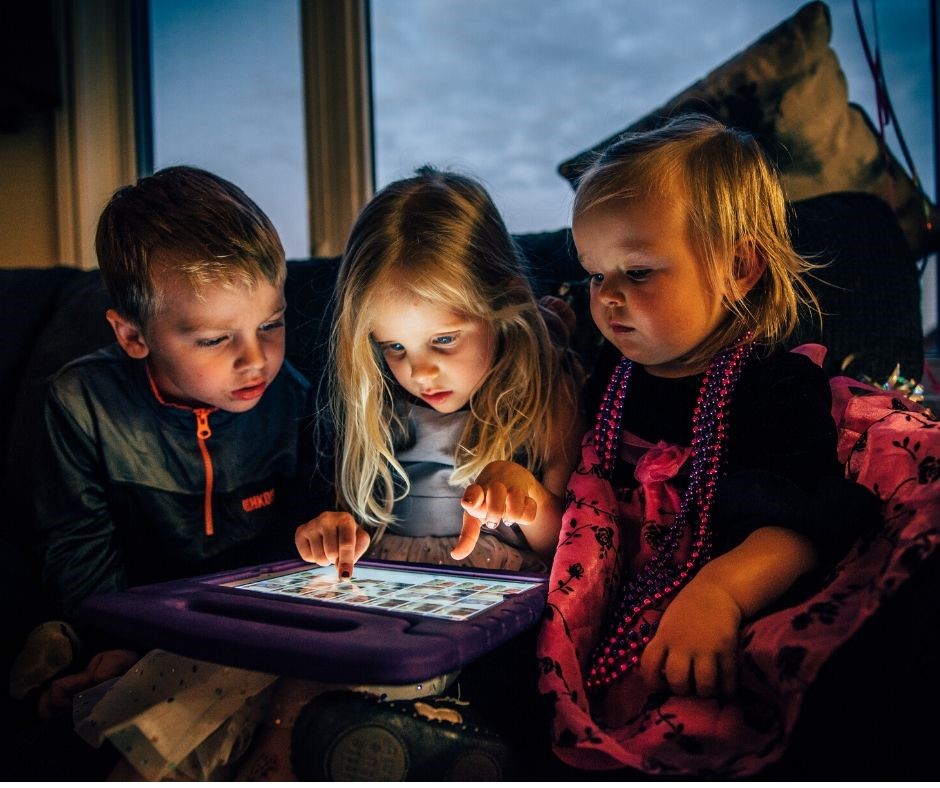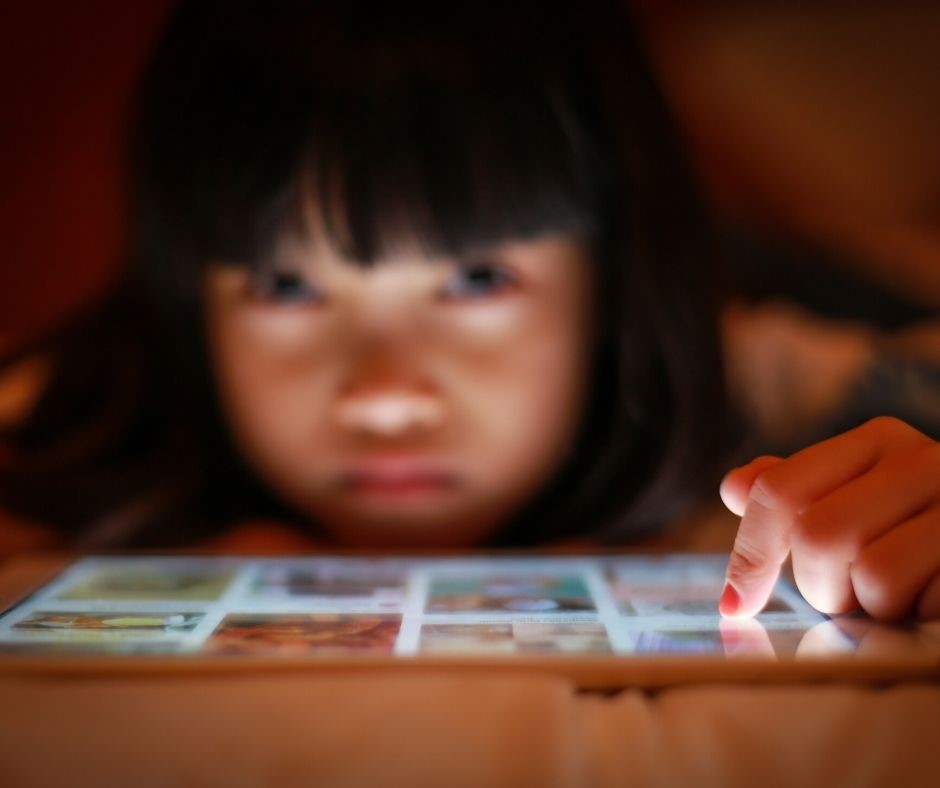
Digital screens have gained popularity in recent years and have become a fundamental part of our lives. Today’s children are one of the first generations to be raised in this new digital age, presenting parents with new issues to navigate. On average, most people spend 3 hours and 15 minutes per day on their phones. But it’s not only adults who are spending a lot of time in front of screens. According to the Public Broadcasting Service (PBS), “children ages 0 to 8 use screen media for an average of 2 hours and 19 minutes each day.” Approximately 48 minutes of this is on a mobile device—a number that has tripled since 2013. This means that regulating screen time is an important issue that parents today need to consider. To help you out, we have compiled a list of parent’s common questions regarding screen time for children.

Source: Common Sense Media
How much screen time is recommended for each age group?
According to the Canadian Pediatric Society, these are the recommended screen time limits for children:
- Under two years old: screen time is not recommended.
- Two to five years old: limit screen time to less than one hour a day.
- Older than five: limit screen time to less than two hours a day.
If you are curious about the details and rationale for these age limits please see this report from the World Health Organization.
Why should I limit my child’s screen time?
One of the main concerns that is raised about screen time for children is that it limits the amount of time they are spending being physically active. According to Statistics Canada, children are spending less time being physically active and more time on screens than ever before. Screen time also limits the amount of time kids are spending engaging in unstructured playtime, which has been shown to be extremely beneficial for a child’s brain development. Other issues with prolonged screen time for young children include fewer social skills, the potential for sleep deprivation and attention issues.
How do I establish healthy screen habits at home?
While it is true that screens aren’t all bad, indeed they are an essential part of our society, it is also important to establish healthy screen habits with your family. As with most things, when it comes to parenting, the best way to teach your child healthy screen habits is to lead by example. In addition to leading by example, here are three other tips to help you regulate family screen time:
- Set Rules with Reasons: Giving your child the reasons behind screen time rules can help to reduce your children being upset. You can also incorporate your kids into the rule development process, which encourages responsibility and accountability.
- Make a Family Media Plan: The American Academy of Pediatrics has created a tool for families to design a Personalized Family Media Plan. This tool will help your family develop a set of rules and make sure they are clearly articulated.
- Word Things Positively: A classic parenting strategy, which can also be useful for helping to establish screen time limits, is to structure rules in a positive way and give them a choice. Let children know what they can do, and only provide choices that are a suitable option. For example, instead of, “You can’t spend more than 1 hour on the iPad”, try “You have 1 hour of iPad time and then you can spend the rest of the evening playing outside or reading.” Allowing your children to make choices for themselves gives a sense of control and autonomy, which can help with smoother transitions.

What are some signs of too much media use?
According to the Canadian Pediatric Society, there are several clues to look for to determine whether screen use is becoming a problem:
- Your child complains about being bored or unhappy without access to technology.
- Oppositional behaviour when you set limits on screen time.
- Screen use is interfering with sleep, school or face-to-face interactions.
- Screen time is interfering with offline play, physical activities or socializing with friends and family.
- Negative emotions after interacting online, playing video games or while texting.
Source: “Screen time and digital media”
Is it OK to use screens to calm or distract my child?
Being a parent can be tough, and sometimes you have to do what you have to do in order to calm your child. If you find yourself frequently using screens to distract your child then maybe consider these alternatives:
- Colouring books or pages
- Reading
- Audiobooks
- Play dough
- DIY Sewing with burlap, large plastic needles and yarn
- Puzzles and brainteasers
- Whiteboard/chalkboard
You can also use a variety of calming strategies to de-escalate the situation.

How can I encourage digital literacy?
Because of our current digital age, it is important to ensure that your children understand digital literacy, especially since you won’t always be there to look over their shoulder. Regulating screen time is one element of digital literacy, but there are also other important aspects, including understanding cyberbullying, protecting private information, searching effectively and understanding that not all information is accurate. The number one way to teach digital literacy to your child is to lead by example, as well as to show your child why being digitally literate is important.
What are some resources I can visit for more information?
There are plenty of resources on the internet that provide information about screen time, but it is important to make sure that your sources are reliable. Here are some that we have found:
- Public Broadcasting Service (PBS)
- World Health Organization
- Caring for Kids from the Canadian Pediatric Society
- Stats Canada
- Comparitech
In addition to those listed above, we have also linked plenty of other resources throughout this blog. Do you have any personal stories or advice about screen time? Let us know in the comments below!